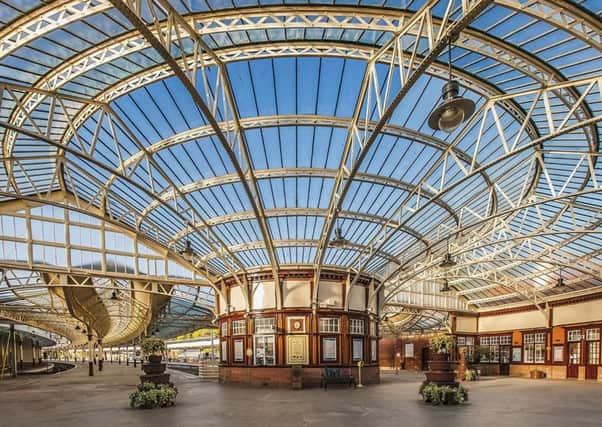Book review: Britain's 100 Best Railway Stations by Simon Jenkins


Scotland punches above its weight in the top 100, with Glasgow Central joining Wemyss Bay as the author’s second five-star station north of the Border, among only six outside London. Jenkins clearly loves Central, like the many passengers who arrive back from the south for whom the station means reaching home. “Edinburgh may be the finer city, but Glasgow takes pride of place for stations... Central is custodian of the city’s soul,” he writes. Jenkins’ descriptions evoke fond memories, such as of the upper windows of the original ticket office, being “festooned with train information placards frantically changed by hand”.
By contrast, Waverley is awarded only two stars by Jenkins, who describes it as a “nervous breakdown of a station”. He writes of the station being reviled by citizens when it was built, because “one of the finest cities in Europe was divided by a pit of smoke and noise”. I’ve always thought Waverley’s huge glass roof makes it look like a factory, although the overhaul completed five years ago is an improvement. The book’s aerial picture, taken from the unusual angle of above the Mound tunnel, is also rather flattering.
Advertisement
Hide AdThis, and other photographs, are among the book’s chief joys, showing both handsome exteriors and beautiful details such as clocks, ironwork and lamps. A lovely shot of Rannoch Station, with its green, chalet-style roof, frames the building against the alluring browns and purples of the surrounding moor. South of the Border, the unique style of the London Underground is well represented, from the uplighters and barrel-vaulted ceiling of Gants Hill to the flying saucer-like rounded facade of Southgate. Other unexpected London delights include the black and white tiled ticket hall at Battersea Park, designed “in the form of a theatre atrium”, and the clean, Art-Deco-meets-Bauhaus lines of Surbiton, which, together with its tall, cinema-like entrance block, make it “one of London’s most polished works of interwar modernism.”
Contemporary design is also saluted, albeit with caveats, such as the controversial overhaul of New Street. Its huge concourse atrium is “Birmingham ‘bling’ at its most promiscuous”, says Jenkins. At King’s Cross in London, the new concourse and its “exhilarating” roof is admired as a “textbook exercise in brazen modernism tempered by historical context”.
Stations are places of anticipation and excitement as embarkation points, and of reassuring familiarity at journey’s end. This book serves to heighten those senses in highlighting the beauty and history of some of these portals. It is hard to imagine a similar attempt to depict the best of Britain’s other transport architecture, such as airports, ferry terminals, or even motorway service areas, as likely to be anywhere near the same league. Jenkins necessarily features a tiny selection of railway stations when there are 2,560 across Britain. But this book will be more than enough to inspire the traveller to take a second glance at their surroundings as they hurry to their train. It should also serve to remind station builders of tomorrow of the aesthetic standards to which they should aspire as the second railway golden age continues to flourish.
*Britain’s 100 Best Railway Stations by Simon Jenkins, Viking, 326pp, £25